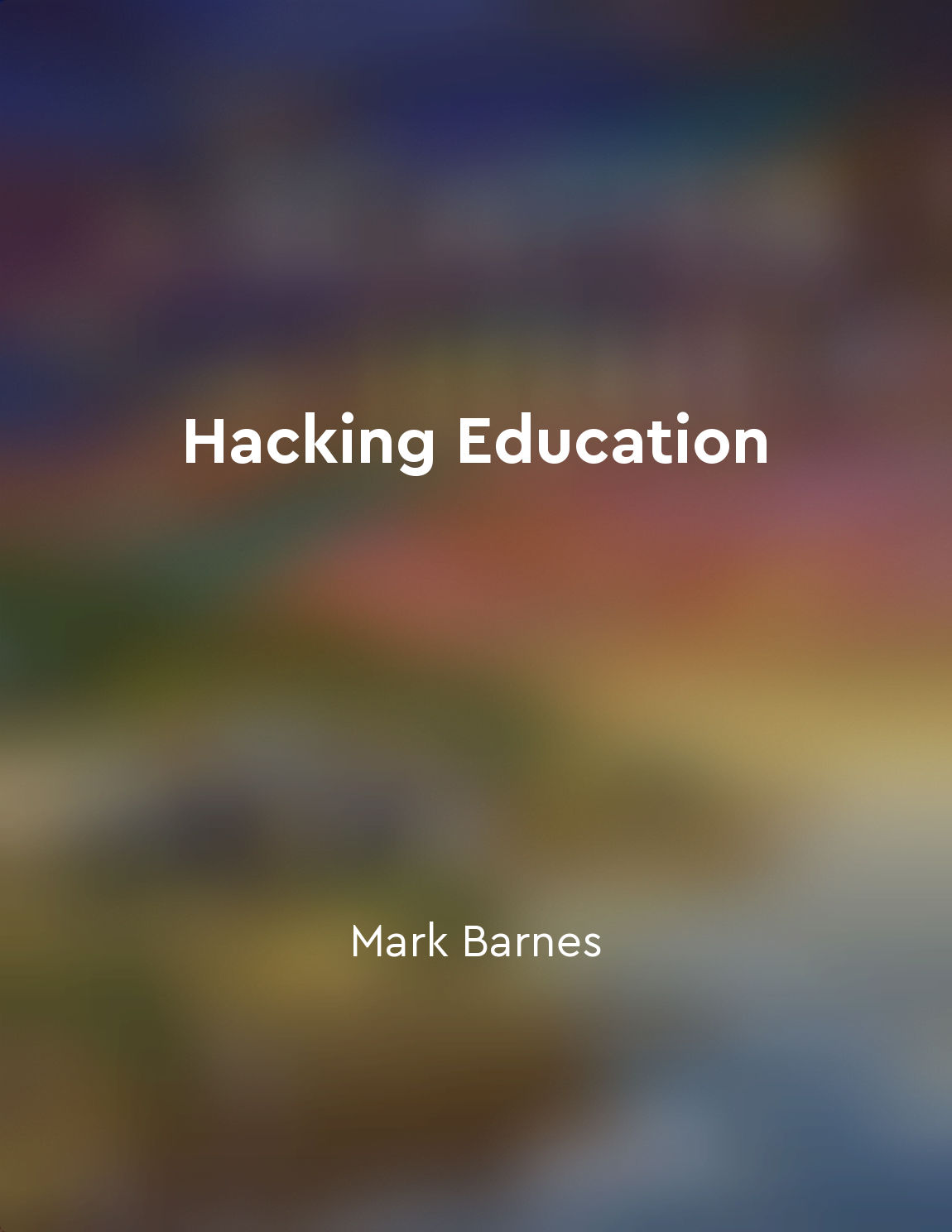Audio available in app
Cultivate creativity and critical thinking skills from "summary" of Hacking Education by Mark Barnes,Jennifer Gonzalez
To truly prepare students for success in the 21st century, it is essential to prioritize the cultivation of creativity and critical thinking skills. These skills are not only valuable in the classroom, but they are also essential for success in the workforce and in life beyond school. Creativity allows students to think outside the box, come up with innovative solutions to problems, and approach challenges with a fresh perspective. Critical thinking, on the other hand, enables students to analyze information, evaluate arguments, and make informed decisions. By developing these skills, students are better equipped to navigate the complexities of the modern world and to thrive in a rapidly changing society. One way to cultivate creativity and critical thinking skills in students is to provide them with opportunities for hands-on, experiential learning. This type of learning allows students to engage with material in a meaningful way, making connections between concepts and applying their knowledge in real-world scenarios. By engaging in hands-on activities, students are able to develop their problem-solving skills, think critically about complex issues, and explore new ideas in a hands-on, interactive environment. Another effective strategy for fostering creativity and critical thinking is to encourage students to ask questions, challenge assumptions, and explore multiple perspectives. By creating a classroom culture that values curiosity and inquiry, educators can empower students to think critically about the world around them and to consider different viewpoints. Encouraging students to ask questions not only helps them develop their critical thinking skills, but it also fosters a deeper understanding of the material and promotes intellectual growth. In addition to hands-on learning and encouraging questioning, educators can also promote creativity and critical thinking by integrating technology into the classroom. Technology provides students with access to a wealth of information and resources, allowing them to explore new ideas, collaborate with peers, and engage with material in innovative ways. By incorporating technology into lessons, educators can create a dynamic learning environment that stimulates creativity, encourages critical thinking, and prepares students for success in the digital age.- Cultivating creativity and critical thinking skills is essential for preparing students to thrive in the 21st century. By providing students with opportunities for hands-on learning, encouraging questioning, and integrating technology into the classroom, educators can help students develop the skills they need to succeed in school, in the workforce, and in life. By prioritizing creativity and critical thinking, educators can empower students to think critically, solve complex problems, and approach challenges with confidence and creativity.


